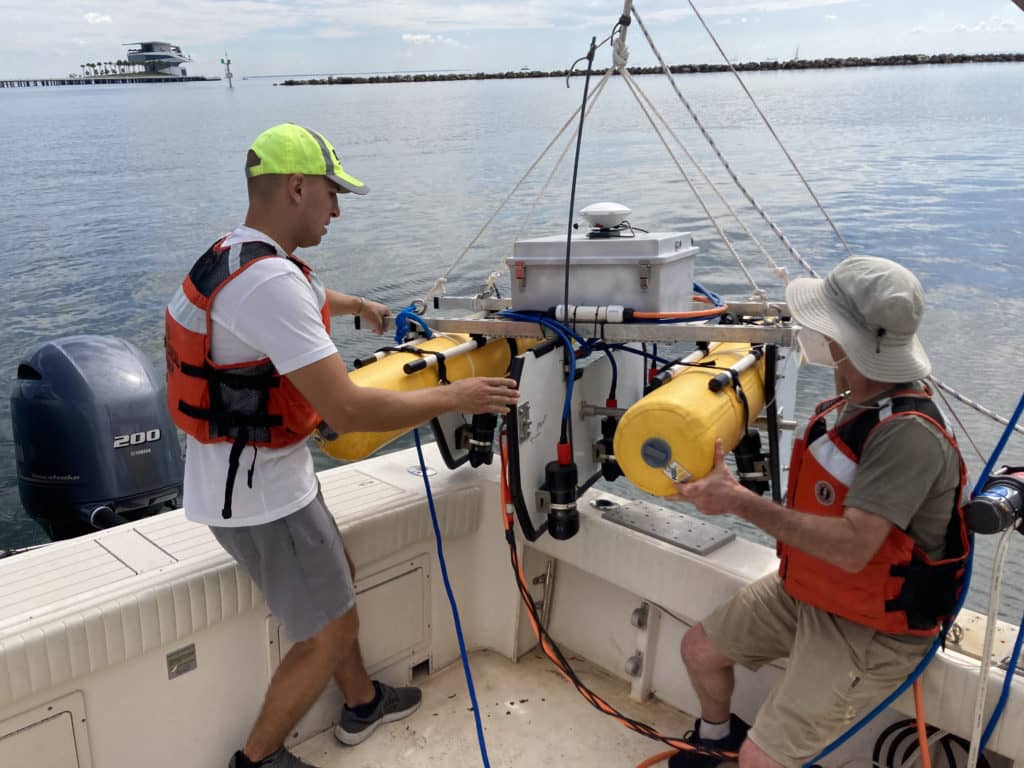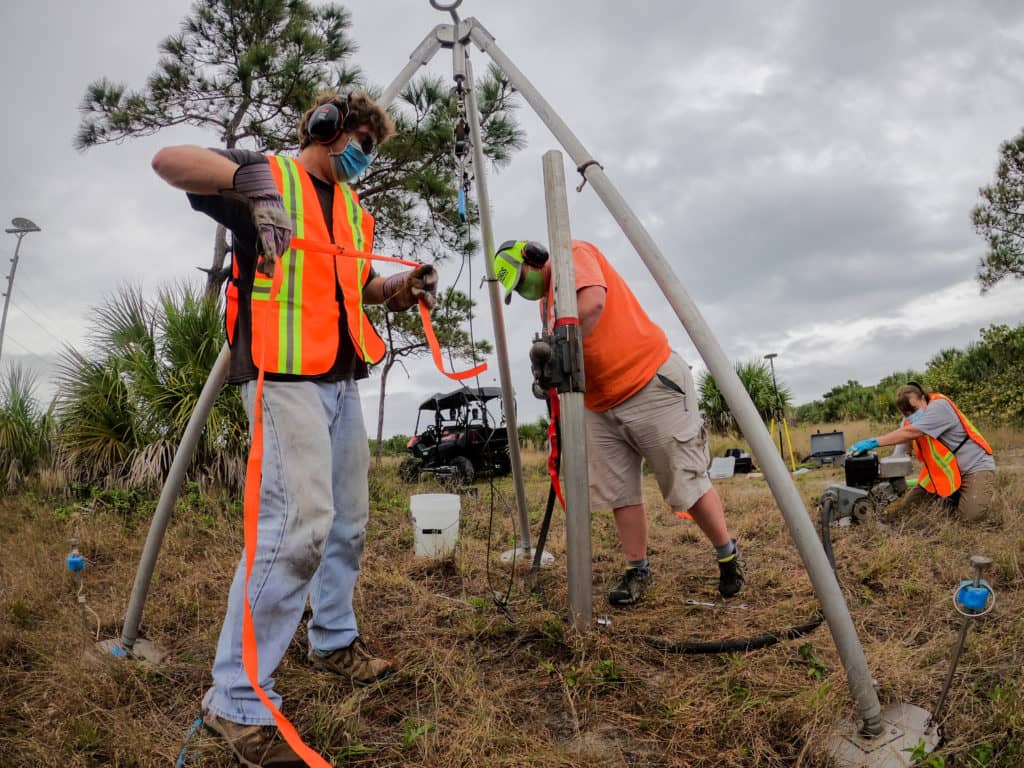USGS remains one of St. Pete’s best-kept secrets

The nearly century-old historic red brick Studebaker building belies the highly technical marine research emanating from inside the federal facility.
Built in 1925, the downtown building has served as the U. S. Geological Survey’s (USGS) St. Petersburg Coast and Marine Science Center since 1988. As the need to solve local and global research problems has increased, so have the facility’s numbers. The facility opened with six staff members and the staff has since ballooned to 100, all dedicated to protecting one of the area’s most precious resources – its water.
Despite the wealth of knowledge and research housed behind those brick walls, many residents remain unaware of the local and global impact of their USGS neighbors. To help shine a light on its critical work, the federal organization recently released a booklet, “Coastal and Marine Science of the U.S. Geological Survey in St. Petersburg, Florida.”
“We’re sort of a research factory,” said Nathaniel Plant, center director. “Some people say, ‘oh, you can’t do that – it’s impossible.’ Well, we can do some of that.”
A key focus of the St. Pete center is serving the mission of the USGS Coastal and Marine Hazards Program, an initiative Congress authorized in 1962. Researchers survey beach elevations utilizing GPS and various hardware and software along the nation’s coastline, including a field site in Madeira Beach.

USGS researchers deploy sea floor mapping equipment near the St. Pete Pier.
The Coastal Change Hazards researchers study how coastlines change over time, especially after severe storms and in light of ongoing sea level rise. The center’s team integrates basic and applied research, technical capabilities – including lidar, satellite imaging and nearshore sea-floor mapping – and stakeholder engagement to ensure research and products meet the public needs.
The booklet notes the importance of those efforts as nearly 40% of the nation’s population – along with numerous species of wildlife – live along the coast. Extreme changes pose a risk to both.
“I think that’s one of the cool things,” said Nathaniel Plant, center director. “Even though we’re here in St. Pete, that group handles storm impacts on the Atlantic Coast, Gulf Coast and increasingly, on the Pacific Coast.”
The USGS also provides several interactive tools to provide insights to residents. Locally, researchers use remote video sensors to monitor changes at Pinellas County beaches like Madeira Beach and Sand Key. The St. Pete center then uploads the feeds for public consumption.
Additionally, the Coastal Change Hazards Portal allows users to explore forecasts of those fluctuations before and after storms, along with shoreline measurements and sea-level rise vulnerability predictions. While labeled as an “experimental product,” the USGS also offers its Total Water Level Forecast to provide real-time predictions of coastal sea levels, erosion and overwash along Gulf and Atlantic beaches.

Researchers collect sediment cores at Fort De Soto Park.
Hurricane season has been relatively quiet thus far, but Plant said USGS is preparing for an increase in tropical activity.
“So, that team has updated data and models,” said Plant. “And an ability to – working with NOAA’s (National Oceanic and Atmospheric Administration) forecasting capabilities – update predictions on what beaches and sand dunes might suffer severe erosion if a particular hurricane makes landfall.”
The local center, strategically located at the corner of 4th Street and 6th Avenue South in St. Petersburg’s Innovation District, makes full use of the wealth of community partners in the area.
The Studebaker building is next door to the University of South Florida St. Petersburg and its College of Marine Science. In addition to NOAA, the Coast Guard, Florida Fish and Wildlife Research Institute and the Maritime and Defense Technology Hub facilities are all less than a mile away.
Meghan Emory, information specialist for USGS, said access to diverse collaborative opportunities benefits both the center and the St. Petersburg Community.
“There’s a lot of marine science organizations, but we all kind of have our own niche to do things a little bit differently,” explained Emory. “And so, having that opportunity to communicate and collaborate allows us to make bigger strides in our industry, rather than small steps.”
Plant said the center is federally mandated to tackle coastal and marine problems, many of which are still unknown. While many of his employees are scientists, some are not, and he said they all share one thing in common – they believe in the mission and helping their community.
He believes the downtown location’s benefits and close proximity to federal partners, contractors, USF and Eckerd College help attract top talent to address local and national issues.
The current federal administration, Plant relayed, has recently increased funding for the USGS to ensure equitable responsiveness and delivery of resources. While the St. Pete center often focuses on hurricane and sea level impacts, he noted they respond to other emergencies, such as the Deepwater Horizon oil spill.
“That was an unprecedented problem,” said Plant. “That sort of thing, I assume, will keep on happening.”
In light of the increase in funding and studies – and the USGS video feeds – showing dramatic coastline changes, Plant said the center is undergoing a growth phase. He plans to increase the workforce by 10% annually.
Emory added that the close proximity and relationships with USF and Eckerd aid in recruitment efforts and also helps enhance the current staff’s education.
“We have a lot of really good people that get the work done,” said Plant. “That we’ve committed to doing and can envision the next work that we should be doing – and they, and we – get it right.”
View the full informational booklet here.







